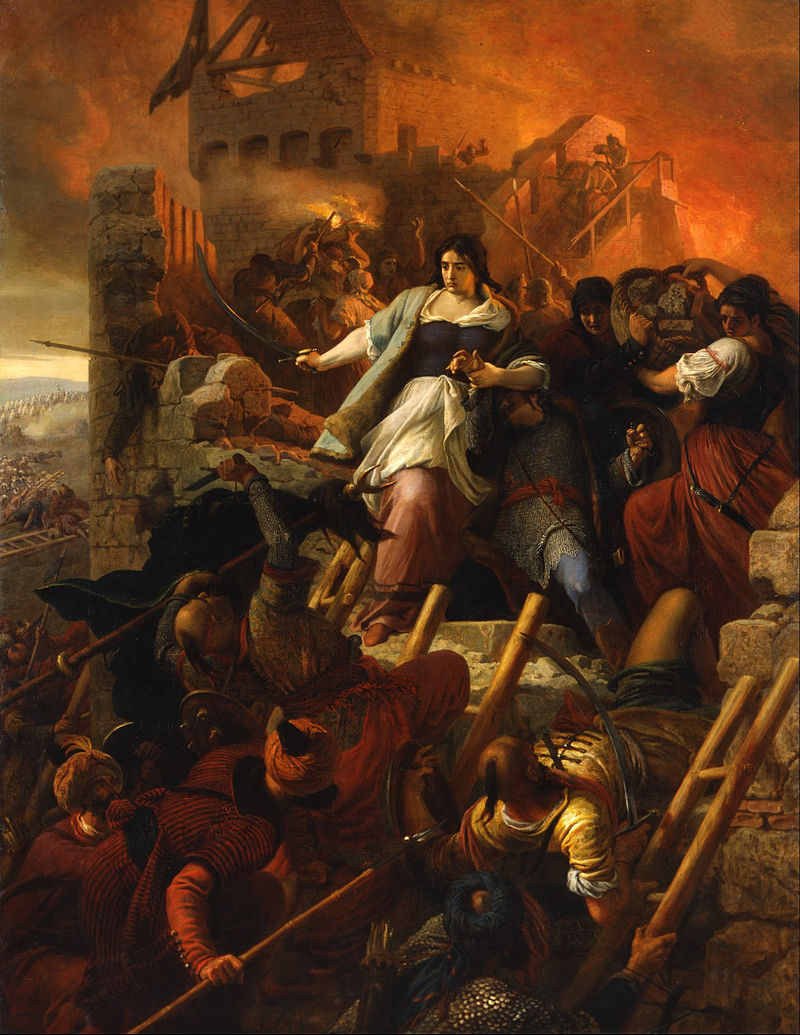During the Siege of Eger in 1552, a defending force of approximately 2,200 individuals comprising professional soldiers, peasants, and a few dozen women successfully repelled an attacking Ottoman army of approximately 35,000 to 40,000 men. Though the women numbered only in the dozens and had no real military training of any kind, they helped defend Eger Fortress against the assaulting forces and played a significant role in repeatedly repelling the Ottoman onslaught. The siege lasted 39 days before Turkish commanders finally gave up and withdrew.
The painting above is Bertalan Székely’s depiction of the female defenders at Eger. I have always admired this painting. In my mind, it captures the tougher, more aggressive side of femininity in a positive light. The image contains all the values and virtues modern feminists promulgate – resistance, courage, agency, determination, bravery, competence, ability, and equality with men. At first glance, this painting contains everything a feminist should find admirable.
Of course, most contemporary feminists would not interpret the painting in this way. Oh no, that would be too simple. Most feminists would not regard women putting their lives on the line to defend their nation and their faith from a dangerous force as a good thing. That would be too obvious. Instead, modern feminists would see only layers of oppression in the colors Székely had painted on the canvas.
Firstly, modern feminists would point out the painting depicts the patriarchy’s exploitation of Eger's oppressed women. Feminists would explain that patriarchy had indoctrinated these women into believing they were defending themselves when, in fact, they were doing little more than defending the systems of their own oppression, namely the patriarchy, the nation, Christianity, family, and white supremacy.
Secondly, our modern feminists would also likely eye the painting and emphasize the the poor working conditions, gender stereotypes, glass ceilings, obvious sexual objectification, and violence against women the work of art contains.
Lastly, our modern feminists would argue the evil patriarchy had also indoctrinated the women of Eger into a racist ideology. The men of Eger, these feminists would claim, had taught their women to hate the Other and to reject the vibrant, enriching cultural possibilities Ottoman conquest clearly offered. By being brainwashed into believing the Ottomans were an evil force striving to enslave them, the women of Eger had become oblivious to the true source of their oppression - Hungarian men and the hideous patriarchy these Hungarian men had erected. As a result, Eger's women were incapable of seeing the conquering army as a liberating force, which is what it actually was.
If you think my assessment of modern feminism is unfair or exaggerated, I encourage you to watch the brief snippet below. Something tells me the Hungarians would have lost the fortress in a single day if the women of Eger had been anything like the enlightened feminist thinker in this short video.


 RSS Feed
RSS Feed

